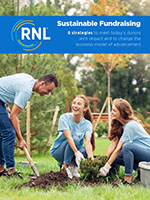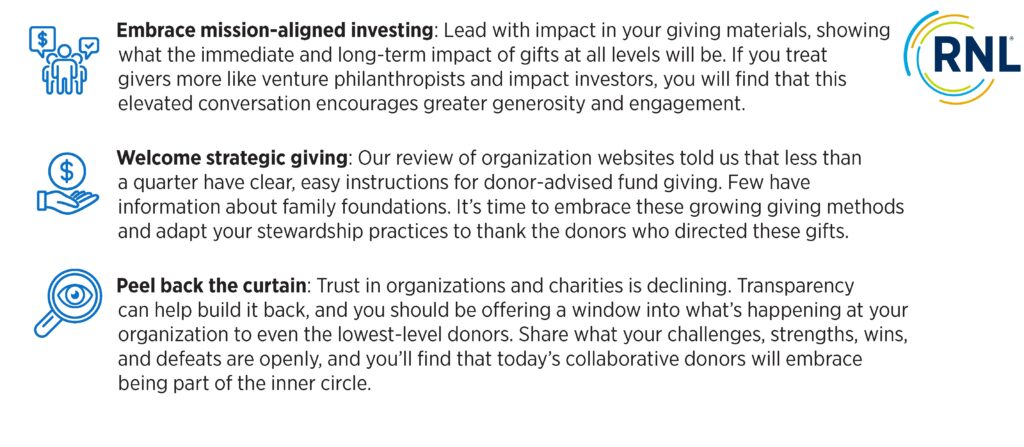fundraising
The Keys to a Sustainable Fundraising Strategy
Fundraising is at a crossroads. Giving USA reported last year that for only the third time in 40 years, giving declined (at least in terms of how we count it today). That was fueled by market and inflationary forces, but it was no surprise to those of us who have been watching fundraising trends over the past decade.
Our newest white paper Sustainable Fundraising addresses the declining donor pipeline, challenges that fundraisers face, and real solutions for succeeding in today’s environment. You can download it now, and here are a few reasons why we put it together.
Donor decline is real, and fundraising is ready for innovative strategy
While mega-givers make headlines, mass donor decline is real. In higher education, 70 percent of institutions experienced a decline in alumni donor counts over the past 10 years, with an average loss of 30 percent. Over three-quarters remain down on donors since the start of the pandemic. (That’s from my deep dive into CASE VSE data). These trends are similar at many other charities.
And yet, some organizations set records, doing things like doubling donor participation. Creative institutions have ignited the passion of multi-generational audiences, defying the trend. While the “generosity crisis” is real, it is by no means a foregone conclusion.
Download Sustainable Fundraising
Read this fundraising white paper to learn about eight key strategies that can help you build a robust donor pipeline in today’s challenging philanthropic environment, including engaging Millennial and Gen Z donors, maximizing leadership giving, and using artificial intelligence to improve the donor experience.
Sustainable fundraising is about inclusion, smart use of resources, and data-driven strategy
Fundraising organizations that have had broad-based donor response and pipeline growth have a few things in common: they embrace an inclusive audience and speak the language of younger donors. They use technology and data in more integrated ways. At these organizations, philanthropy is becoming part of the culture, not an afterthought. These are key components of what we’re calling a sustainable fundraising strategy: one that meets both immediate revenue goals and builds for the future.
Image: A few of the key recommendations from our newest white paper on fundraising strategy.
We are kicking off 2024 with our thoughts on this key paradigm shift. Some key recommendations for fundraisers outlined in Sustainable Fundraising, with data, include:
- Increasing engagement using an omnichannel approach. That means using things like texting, email, volunteers, calling, and social media together, not in silos.
- Moving beyond “participation” to focus on giving impact, donor pathways, and major gift velocity.
- Amplifying leadership giving with attention to donors who are ready to step up but who we often neglect because they are not yet “major gift prospects.”
- Using giving days and cause-based crowdfunding not as a gimmick, but as an integrated part of strategy.
- Adapting to constant staff turnover by automating and outsourcing so you can focus on what only you can do: personal donor relationships.
- Making philanthropy a key partner in strategic planning, not an afterthought to “pay the bills.”
That’s a big list, I know. I encourage you to read the full white paper, where we break it all down. It includes 20 pages of trend data, insights from millions of donor records in RNL platforms, and examples of where our partners have seen success amidst these challenges.
“Many of our advancement shops are designed for the donors who are disappearing. It’s time for change.”
– Sarah Myksin, Senior Vice President, RNL
The time is now to shift the fundraising paradigm, and grow a pipeline of engaged donors
Donors are changing. And our fundraising strategy, at the fundamental level of our thinking about business models, will need to change with them. It’s time to embrace an inclusive, data-driven and resource-conscious strategy. That is at the core of sustainable fundraising.


